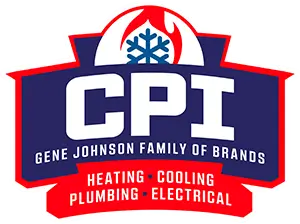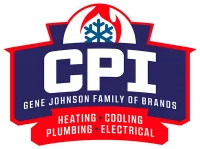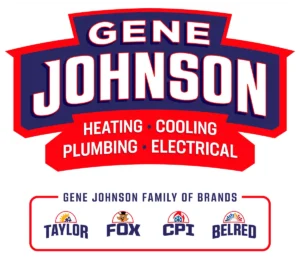How Do Heat Pumps Work?
If you’ve ever wondered, “How do heat pumps work?” you’re not alone. These marvels of modern technology are increasingly used in homes for both heating and cooling.
Yet despite their popularity, the underlying mechanics can seem mystifying to most.
In this article, we will shed light on the intricate world of heat pumps. We’ll also dive into the inner workings of these devices, highlight their primary components, and describe different types of heat pumps and their unique processes.
Read on to learn more!
What is a Heat Pump?
A heat pump is an all-in-one heating and cooling system. Rather than generating heat, it works by transferring heat from one location to another.
During winter, it moves heat from the outside into your home. During summer, it removes heat from your home and releases it outdoors.
This heat transfer process is not only efficient but also economical, making heat pumps a preferred choice for many homeowners.
How Do Heat Pumps Work?
Heat pumps use principles of thermodynamics to provide both heating and cooling solutions for your home. Let’s explore this in detail by walking you through the steps of both the heating and cooling processes:
Heating Process
- Heat Absorption: The process starts with the outdoor unit of the heat pump. This unit, exposed to the outside environment, begins by absorbing heat from the air or the ground, depending on the type of heat pump.
- Heat Transfer: Once the heat is absorbed, it is transferred to a special refrigerant fluid inside the unit. This fluid has a very low boiling point, which means it easily converts into gas when it absorbs heat.
- Compression: This refrigerant, now carrying the heat, is sent to a compressor. The compressor squeezes the refrigerant, causing its temperature and pressure to rise significantly. As a result, the refrigerant turns into a high-temperature gas.
- Heat Extraction: The high-temperature refrigerant then moves into the indoor unit of the heat pump. Here, the heat is extracted from the refrigerant and used to warm up the air that is circulated around your home.
Cooling Process
- Heat Absorption: Unlike the heating process, the cooling operation begins with the indoor unit of the heat pump. It absorbs the heat from your home’s air and transfers this absorbed heat to the refrigerant.
- Heat Transfer: The refrigerant, now carrying the heat, is transported to the outdoor unit.
- Expansion: In the outdoor unit, the refrigerant passes through an expansion valve. This reduces its pressure and causes it to cool down significantly.
- Heat Release: The now cool refrigerant releases the absorbed heat from your home into the outside environment, thereby cooling your home’s interior.
Understanding these processes is key to appreciating the brilliance behind heat pump operation. They work in harmony to provide your home with efficient heating and cooling throughout the year.
For more assistance and information, please don’t hesitate to contact us at (360) 822-9306 today!
Components of a Heat Pump
Heat pumps are a complex combination of various parts working together. To understand how heat pumps work, it’s crucial to comprehend the role of each major component in a heat pump.
Let’s take a closer look at these essential parts:
Outdoor Unit
The outdoor unit of a heat pump is an integral part that primarily functions in two ways: absorbing and expelling heat. This unit contains several components:
- Fan: The fan pulls in outside air, which either provides heat in the winter or absorbs heat in the summer, depending on the heat pump’s mode.
- Coil: The coil, usually made from copper or aluminum, is where the heat transfer between the refrigerant and the outside air occurs.
- Compressor: The compressor pressurizes the refrigerant, transforming it into a high-temperature gas that can transport heat more effectively.
Overall, the outdoor unit acts as a hub of heat exchange, making it a critical part of any heat pump installation and repair.
Indoor Unit
Also known as the air handler, the indoor unit is responsible for circulating cooled or heated air throughout your home. It comprises:
- Fan: The fan in the indoor unit is in charge of circulating the air through your home, ensuring even distribution of cooled or heated air.
- Coil: Similar to the outdoor unit, the coil in the indoor unit also facilitates heat transfer. In this case, it helps to cool down or heat up the air that’s blown into your home.
- Expansion Valve: The expansion valve in the indoor unit plays a vital role during the cooling process. It regulates the refrigerant, controlling its flow into the coil to manage the cooling effect.
Refrigerant
The refrigerant is the lifeblood of any heat pump. It’s a unique fluid with specific thermal properties that make it ideal for absorbing and releasing heat.
During the heating process, it absorbs heat from the outdoor air and transports it indoors. In the cooling process, it does the opposite, absorbing heat from indoors and releasing it outside.
Compressor
The compressor is essentially the heart of the heat pump, pumping refrigerant throughout the system.
By compressing the refrigerant, it increases its pressure and temperature, enabling it to carry more heat. This step is crucial in both heating and cooling processes.
Reversing Valve
The reversing valve is what sets a heat pump apart from a regular air conditioner. It allows the heat pump to switch its operation between heating and cooling modes.
By changing the flow direction of the refrigerant, it effectively reverses the roles of the indoor and outdoor units.
Expansion Valve
The expansion valve plays a pivotal role during the cooling process. It lowers the pressure of the refrigerant before it enters the indoor coil, causing it to cool down dramatically.
This cooling effect allows the refrigerant to absorb heat from your home’s air, thereby lowering your home’s temperature.
Types of Heat Pumps (and How They Work)
Heat pumps come in various types, each having unique mechanisms for extracting and transferring heat.
Understanding these different types can help you choose the best one for your specific needs, whether you’re considering a new installation or upgrading an existing system.
Air-Source Heat Pump
Air-source heat pumps are the most common type used in homes and small businesses. They operate by transferring heat between the air inside a building and the air outside.
In winter, these pumps extract heat from the outdoor air (even when it’s cold) and transfer it inside. In summer, they reverse the process by absorbing heat from the indoor air and releasing it outside.
The installation and repair of air-source heat pumps are relatively straightforward, making them a cost-effective choice for many.
Geothermal Heat Pump
Geothermal (or ground-source) heat pumps utilize the stable temperature of the earth to provide heating and cooling.
They use a network of pipes, known as a ground loop, buried in the ground to extract heat from the earth during winter and reject heat into it during summer.
Although the initial installation cost can be high due to the need for ground excavation, geothermal heat pumps are highly efficient, leading to significant energy savings over time.
Water-Source Heat Pump
Water-source heat pumps operate by transferring heat between a building and a nearby body of water, such as a pond or lake.
In the winter, they extract heat from the water and transfer it indoors, and in the summer, they remove heat from the building and dump it into the water.
These systems are highly efficient but their applicability is limited by the need for a nearby water source.
Ductless Mini-Split Heat Pump
Ductless mini-split heat pumps are a great solution for homes without a central duct system.
They consist of an outdoor unit and multiple indoor units, which can be installed in each room for individual temperature control.
This allows for better energy efficiency as you can heat or cool rooms only when needed.
Plus, they are quieter and easier to install compared to traditional systems.
Gas-Fired Heat Pump
Gas-fired heat pumps operate differently from traditional heat pumps. Instead of using electricity to move the refrigerant through the system, they use natural gas.
These heat pumps can be an excellent choice in areas where gas is more economical than electricity.
They can offer substantial savings on energy bills while still providing the comfort of efficient heating and cooling.
Improving Your Home’s Efficiency
Heat pumps are not just about heating or cooling; they’re also about enhancing home efficiency. By simply moving heat instead of creating it, they drastically reduce energy consumption.
Plus, with models like ductless mini-splits offering zone-based climate control, you can further reduce energy usage by only heating or cooling rooms in use.
Understanding how heat pumps work provides valuable insight into their energy efficiency and cost-saving benefits.
Whether you’re considering a new heat pump installation and repair or are just keen on understanding the technology, we hope this guide has illuminated the fascinating mechanics of heat pumps.
We Can Help!
At CPI Plumbing, Heating & Cooling, we’re always ready to help you explore the best options for your home and ensure your heat pump operates efficiently and effectively for years to come.
To learn more about our heating and cooling solutions, don’t hesitate to reach out. Call (360) 822-9306 today.


